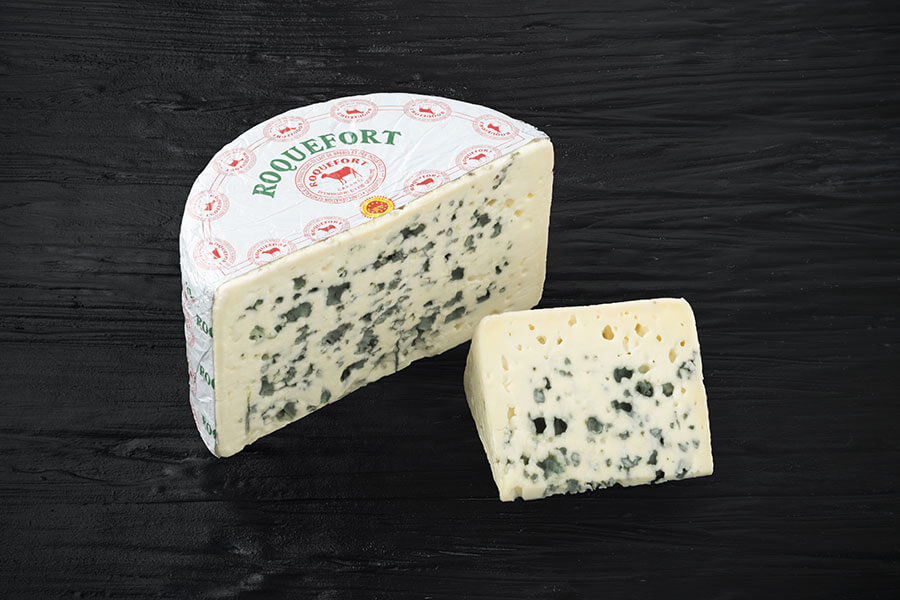Roquefort
Roquefort, a great PDO taste since 1925.
Is there any need to introduce this sheep milk cheese that was the subject of a protective order from the Parliament of Toulouse as far back as 1666 and, in 1925, became the first to gain Designation of Origin status? Made from raw milk, Roquefort is the only sheep’s milk blue cheese to have a Designation. It is unquestionably one of the flagship products that has earned French cuisine such a prestigious reputation around the world. Legend has it that Roquefort is the result of a romantic encounter between a young shepherd and shepherdess. The real story is even better. It, too, began with an encounter: between a unique region, people and sheep. For the last 6,000 years, on the great limestone plateaus known as causses in Roquefort’s region of origin, people have lived in harmony with their herds of sheep, the only source of food in this dry and harsh land. The interaction between people, animals and the land involves a natural blend of elements, milk and caves freshly cut into the rocks, forever renewing Roquefort and bestowing its unique identity and taste. There are now some 3,000 sheep breeders and 1,700 people working in cheesemaking for Roquefort, amounting to a vital sector for the region. The PDO Roquefort is an antidote to the tendency to take jobs away from the region, putting the brakes on rural desertification. It is a wonderful addition to meals, boosting the conviviality and pleasure of sharing France’s cheese culture.
-
Cheeser
Sheep’s milk -
YEAR OF LABELLING
1925 -
Raw milk
-
Blue-veined cheese
Key figures
-
1 428 Milk producers
-
7 Production plants
-
16 012 Tons marketed in 2020
READ MORE
www.roquefort.fr

